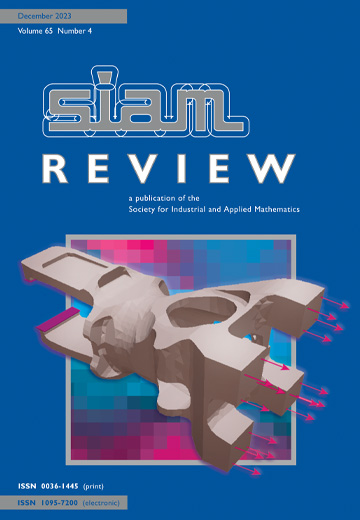动力系统的现代Koopman理论
IF 6.1
1区 数学
Q1 MATHEMATICS, APPLIED
引用次数: 203
摘要
动力系统领域正在被现代计算和数据科学中出现的数学工具和算法所改变。第一性原理推导和渐近约简正在让位于数据驱动的方法,这些方法在算子理论或概率框架中制定模型。在过去的十年中,库普曼谱理论已经成为一个主流观点,其中非线性动力学是用作用于系统所有可能测量函数的空间的无限维线性算子来表示的。这种非线性动力学的线性表示具有巨大的潜力,可以用为线性系统开发的标准教科书方法来预测、估计和控制非线性系统。然而,获得有限维坐标系和嵌入其中的动力学呈现近似线性仍然是一个中心的开放挑战。库普曼分析的成功主要是由于三个关键因素:1)存在将其与动力系统的经典几何方法联系起来的严格理论,2)该方法是根据测量制定的,使其成为利用大数据和机器学习技术的理想选择,以及3)简单而强大的数值算法,如动态模式分解(DMD),已经开发和扩展,以减少库普曼理论在现实世界中的应用。在这篇综述中,我们提供了现代库普曼算子理论的概述,描述了最近的理论和算法的发展,并强调了这些方法的各种应用范围。我们还讨论了快速发展的机器学习领域的关键进展和挑战,这些进展和挑战可能会推动未来的发展,并显著改变动力系统的理论格局。本文章由计算机程序翻译,如有差异,请以英文原文为准。
Modern Koopman Theory for Dynamical Systems
The field of dynamical systems is being transformed by the mathematical tools and algorithms emerging from modern computing and data science. First-principles derivations and asymptotic reductions are giving way to data-driven approaches that formulate models in operator theoretic or probabilistic frameworks. Koopman spectral theory has emerged as a dominant perspective over the past decade, in which nonlinear dynamics are represented in terms of an infinite-dimensional linear operator acting on the space of all possible measurement functions of the system. This linear representation of nonlinear dynamics has tremendous potential to enable the prediction, estimation, and control of nonlinear systems with standard textbook methods developed for linear systems. However, obtaining finite-dimensional coordinate systems and embeddings in which the dynamics appear approximately linear remains a central open challenge. The success of Koopman analysis is due primarily to three key factors: 1) there exists rigorous theory connecting it to classical geometric approaches for dynamical systems, 2) the approach is formulated in terms of measurements, making it ideal for leveraging big-data and machine learning techniques, and 3) simple, yet powerful numerical algorithms, such as the dynamic mode decomposition (DMD), have been developed and extended to reduce Koopman theory to practice in real-world applications. In this review, we provide an overview of modern Koopman operator theory, describing recent theoretical and algorithmic developments and highlighting these methods with a diverse range of applications. We also discuss key advances and challenges in the rapidly growing field of machine learning that are likely to drive future developments and significantly transform the theoretical landscape of dynamical systems.
求助全文
通过发布文献求助,成功后即可免费获取论文全文。
去求助
来源期刊

SIAM Review
数学-应用数学
CiteScore
16.90
自引率
0.00%
发文量
50
期刊介绍:
Survey and Review feature papers that provide an integrative and current viewpoint on important topics in applied or computational mathematics and scientific computing. These papers aim to offer a comprehensive perspective on the subject matter.
Research Spotlights publish concise research papers in applied and computational mathematics that are of interest to a wide range of readers in SIAM Review. The papers in this section present innovative ideas that are clearly explained and motivated. They stand out from regular publications in specific SIAM journals due to their accessibility and potential for widespread and long-lasting influence.
 求助内容:
求助内容: 应助结果提醒方式:
应助结果提醒方式:


